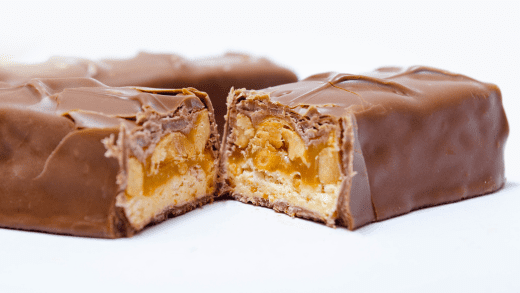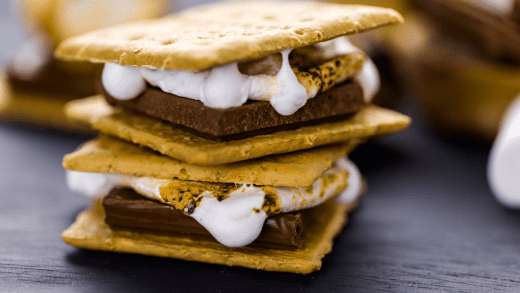Sugar’s talents go far beyond its distinguished sweet taste. Sugar is the star of the show in many of the treats and sweets that come to mind when we think about foods that contain our favorite ingredient. But sugar is often a supporting actor, displaying one or more of its many other talents and contributing to the way foods look, feel and last.

Sugar, Where Are You?
Often, we are led to believe that sugar is hiding in many of the foods we eat. It’s not hiding; however, it may be added to foods for reasons you may have not expected and it is certainly waiting for the recognition it deserves for the many supporting roles it plays.
A 2013 analysis of packaged foods and drinks purchased in American grocery stores found that 68% of products contain caloric sweeteners.1 To get a better idea of how many of those caloric sweeteners are sugar, Mintel analyzed the number of new food and beverage products launched into the marketplace between January 2016-June 2019. During this time there were just over 93,000 new food and beverage products launched into the marketplace. Of these products, 47% contained some form of real sugar2 from sugar beets or sugar cane. The top categories for these new sugar-containing product launches were bakery, snacks, and prepared main course items.3 In fact, 79% of bakery items and 72% of the prepared main courses launched included real sugar. That’s a lot of products; let’s find out why!
The Water Snatcher
Sugar grabs the available water in foods. This is an important function because bacteria grow in moist environments. By soaking up the water, sugar acts as a preservative, preventing the growth of microorganisms that can spoil food. Many products such as jams and jellies, salad dressings and sauces, canned fruits and vegetables, beverages, breakfast cereals, breads, and other baked goods rely on sugar as a preservative. And because water is so attracted to sugar, it helps to retain moisture, extending the shelf life of baked goods.
There is one more reason that the sugar and water relationship is so important and that is the ability to inhibit flour gluten development, which helps create the variety of textures seen in baked goods. A little sugar delivers a dense texture, like in a roll, whereas more sugar produces a fluffy texture, like in a cake.
The Scorcher
When sugar reacts with the protein in foods it causes the food to become brown when heated, like the crust of bread. The more sugar a food contains, the more brown it will become. This browning is called the Maillard reaction.
Sugar can also brown foods through a process called caramelization. When the sugar is heated, it breaks down and caramelizes. To make a beautiful caramel sauce, simply heat white table sugar in a pan and watch as it transforms!
The Growth Expert
Bread is made with baker’s yeast, which feeds on sugar. When the yeast consumes the sugar, it releases carbon dioxide which is what makes the dough rise and gives you the air pockets you find in yeast bread.
Sugar also stabilizes the foam structure in egg white foams, like meringues, to allow air to be incorporated to create a fluffy and tall end result.
A Real Character
Sugar contributes to texture and mouthfeel in nearly every food category, from cookies and ice cream to cereal, salad dressing, canned fruits and vegetables, and beverages. The air pockets formed when you beat together butter or shortening with sugar give cookies a crumbly structure. When sugar is mixed with pectin (a starch found in fruits and vegetables) and an acid (like lemon juice) at a high temperature, the result is the gel-like consistency found in jams and jellies.
Ice cream is creamy because sugar lowers its freezing point, slowing down the freezing process and preventing the formation of ice crystals. This creates a smooth, creamy consistency that’s easy to scoop. Beverages sweetened with sugar feel thicker in your mouth than those that aren’t, like chocolate milk for example, even the non-fat version tastes very creamy.
The Amplifier and Balancing Act
Of course, we all know the aroma of something sweet in the oven, but sugar naturally enhances flavors too. Vegetables have that fresh-from-the garden taste when a little sugar is added. Sugar helps strengthen fibers and cell structures in fruits and vegetables during cooking (related note: sugar added to a vase can keep your flowers fresh longer, too!).
On the flip side, sugar balances sour, bitter, salty, spicy, and acidic flavors in foods. It counters the acidity in tomato and barbeque sauces and salad dressing and makes foods that contain a lot of fiber (and hence, bitter flavors) taste a lot better. Without sugar, many foods would be much less enjoyable and often completely inedible.
The 2020-2025 Dietary Guidelines for Americans recognizes that the addition of small amounts of added sugars to some nutrient-dense foods help make some foods more palatable while working towards meeting food group recommendations (within calorie limits).4
Swapping out sugar? Not so fast
Efforts to reduce or remove sugar from foods and beverage products often require complex reformulation. This is because there is no single ingredient can replace real sugar’s flavor and function; when sugar is removed, often several ingredients need to be added.
There is no substitute for real sugar. It’s versatile and plays vital roles in many of the foods we eat beyond its notable taste.
References:
- Popkin BM, Hawkes C. Sweetening of the global diet, particularly beverages: patterns, trends, and policy responses. Lancet Diabetes Endocrinol. 2016;4(2):174-186. doi:10.1016/S2213-8587(15)00419-2.
- Sugar classification includes sugar, raw sugar, cane sugar, organic cane sugar, cane juice, molasses, golden sugar, demerara sugar, turbinado sugar, brown sugar, beet sugar, beetroot syrup, invert sugar, and invert syrup.
- Sugar & Sweeteners Landscape. July 2020.
- S. Department of Agriculture and U.S. Department of Health and Human Services. Dietary Guidelines for Americans, 2020-2025. 9th Edition. December 2020. Available at DietaryGuidelines.gov. Accessed September 14, 2021.





Get Social with #MoreToSugar